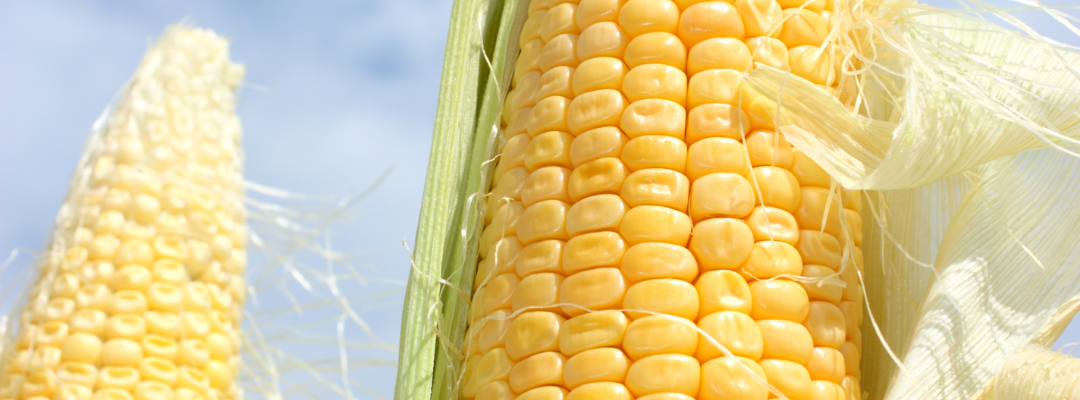U.S. corn exports are important in determining farm level prices. For the 2022/2023 marketing year, the November USDA World Agricultural Supply and Demand Estimates (WASDE) report estimates 15.4% (2.15 billion bushels) of U.S. corn production will be exported to foreign markets. This does not include the export of corn products, such as ethanol and DDGS.
Figure 1. U.S. corn exports (quantity, value, and price) and USDA – National Agricultural Statistics Service (NASS) average monthly price, 5-year average, 2021, and 2022.

Exports fluctuate month-to-month, with the majority of U.S. corn exports occurring January through July (Figure 1). In calendar year 2022, the quantity of U.S. corn exports has lagged behind last year’s pace – 2.038 billion bushels compared to 2.363 billion bushels in 2021 as of the end of October (Figure 1; Export Quantity). However, in terms of value, the U.S. has exported $400 million more in 2022 ($16.53 billion), than 2021 ($16.11 billion) (Figure 1; Export Value).
Price is the reason for the difference between lower quantity and greater value. USDA export sales do not report prices, but a monthly export price can be calculated by dividing value by quantity (Figure 1; Calculated Export Price). The calculated export price needs to be interpreted cautiously as this price does not represent prices established only in the month reported (prices can be established months in advance of exports). That being said, the calculated export price does provide a point of reference for comparison to other prices.
Table 1 shows the calculated export price (Figure 1; Calculated Export Price) minus the USDA NASS national estimated cash farm price (Figure 1; NASS Price). From 2017 to 2020, the difference between the calculated export price and the NASS price ranged from a low of $0.80 to a high of $1.21 per bushel. In 2021 and 2022, the range of the price difference was $1.02 to $1.81 per bushel, $0.41 per bushel greater than the four prior year’s average. The price difference can be interpreted as a rough approximation of the costs associated with moving corn from the farm gate to the export terminal.
What is the reason for this increase in the price difference? The most likely factor is increased transportation costs. This is due to supply chain disruptions coming out of the pandemic, elevated fuel costs, and higher wage rates. While the price difference has increased the past two years, the NASS estimated price has accounted for a greater portion of the calculated export price: 80.5% in 2021 and 2022 compared to 77.5% from 2017-2020. So, even with a wider differential between cash farm prices and export prices, the farmer is receiving a greater proportion of the export value. Whether the increased price difference between calculated export price and NASS price, or the proportion allocation holds into the future is highly uncertain.
Table 1. Calculated monthly corn export price minus USDA NASS price ($/bu), 2017-2022
| Jan | Feb | Mar | Apr | May | Jun | Jul | Aug | Sep | Oct | Nov | Dec | |
| 2017 | 1.02 | 1.00 | 0.95 | 1.03 | 0.94 | 1.00 | 0.92 | 1.09 | 0.99 | 1.06 | 1.09 | 1.12 |
| 2018 | 1.05 | 0.94 | 0.94 | 0.93 | 0.96 | 1.11 | 1.15 | 1.20 | 1.10 | 1.10 | 1.14 | 1.07 |
| 2019 | 1.05 | 1.03 | 1.01 | 1.10 | 0.96 | 0.86 | 0.83 | 0.90 | 0.96 | 0.80 | 0.99 | 0.96 |
| 2020 | 0.89 | 0.92 | 1.06 | 1.12 | 1.11 | 1.12 | 1.00 | 1.08 | 0.96 | 0.99 | 1.12 | 1.21 |
| 2021 | 1.66 | 1.61 | 1.55 | 1.40 | 1.15 | 1.42 | 1.49 | 1.03 | 1.64 | 1.81 | 1.59 | 1.62 |
| 2022 | 1.44 | 1.33 | 1.19 | 1.24 | 1.56 | 1.34 | 1.32 | 1.28 | 1.02 | 1.70 | ||
| 5-Year Average | 1.23 | 1.24 | 1.26 | 1.25 | 1.20 | 1.20 | 1.13 | 0.94 | 0.95 | 1.20 | 1.29 | 1.31 |
References and Resources:
U.S. Department of Agriculture – Foreign Agricultural Service (USDA-FAS). Global Agricultural Trade System (GATS). Available on-line at: https://apps.fas.usda.gov/GATS/Default.aspx
U.S. Department of Agriculture – National Agricultural Statistics Service (USDA-NASS). November. Available on-line at: https://quickstats.nass.usda.gov/
U.S. Department of Agriculture – World Agricultural Supply and Demand Estimates (USDA-WASDE). November. Available on-line at: https://www.usda.gov/oce/commodity/wasde

Author: Aaron Smith
Associate Professor and Crop Marketing Specialist
aaron.smith@utk.edu
Smith, Aaron. “Corn Exports: Quality, Value, and Prices.” Southern Ag Today 2(51.1). December 12, 2022. Permalink

